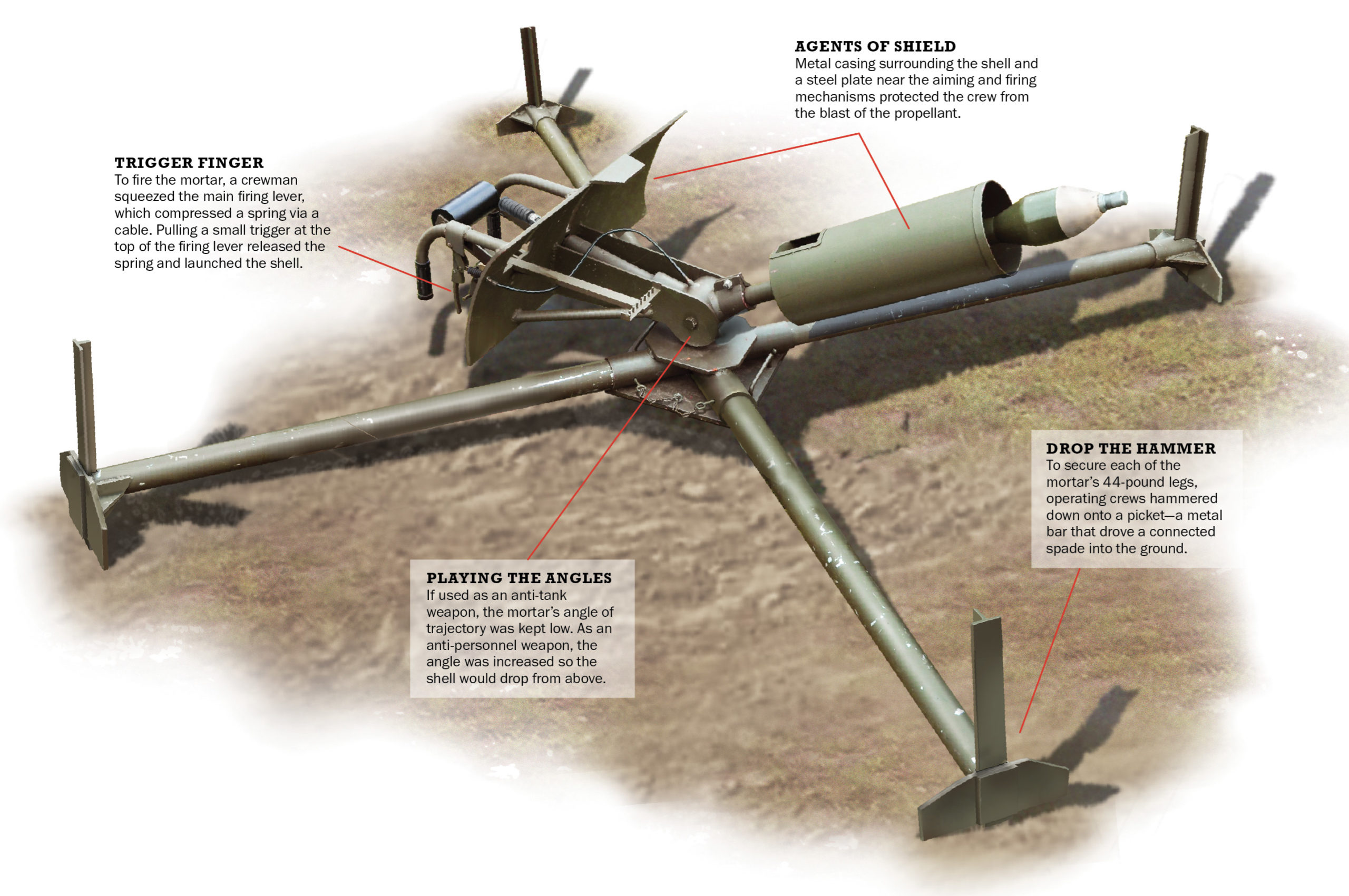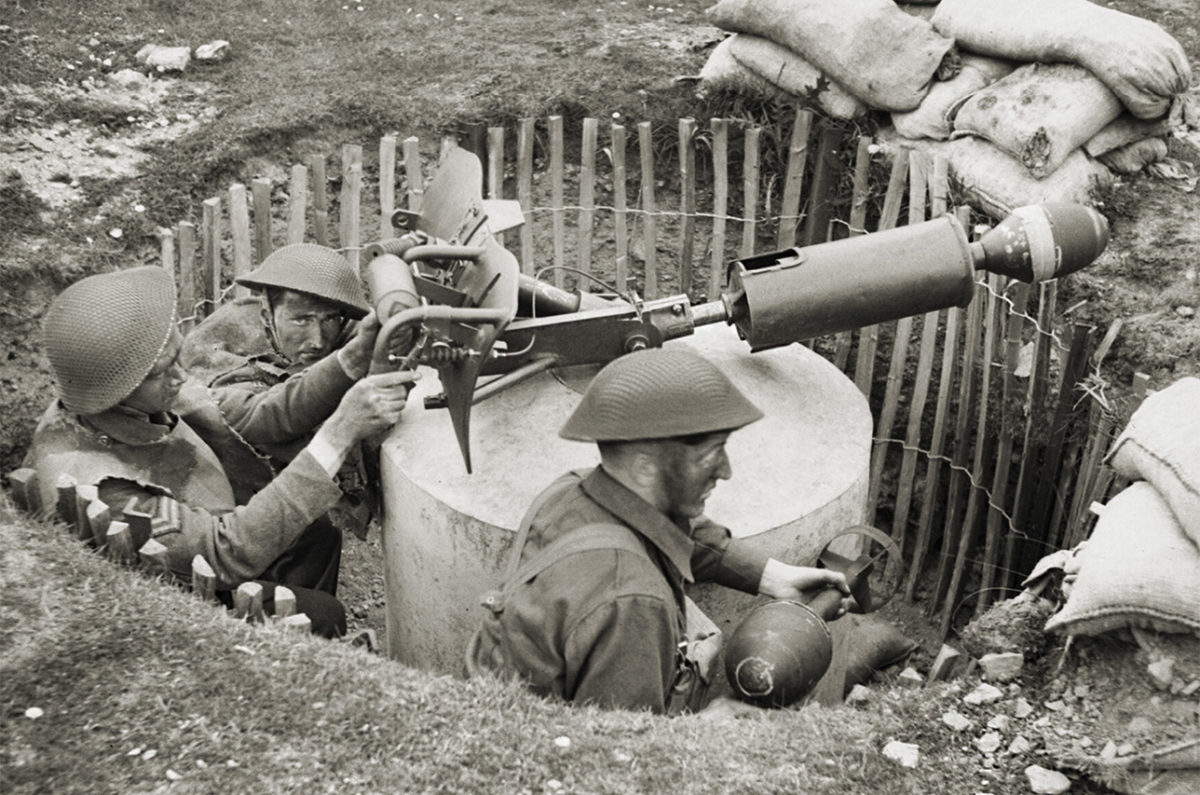The British Expeditionary Force’s rapid 1940 departure from Dunkirk left the English desperately short of military hardware, especially anti-tank guns. As 1941 progressed, the British Home Guard instituted a series of ad hoc defensive measures to protect the homeland ahead of a feared German invasion.
Enter the Blacker Bombard, a spigot mortar designed by Lieutenant Colonel Stewart Blacker from a design he started in the 1930s. The concept was relatively simple: a shell containing propellant and explosives was slipped onto a steel rod—a spigot—from which it was triggered and launched. The weapon’s intended role was as an anti-tank mortar, but it proved mostly ineffective in this capacity, as the low velocity of the 20-pound shells gave them little chance of penetrating heavy armor. In addition, faulty fuzes meant the shells often failed to explode on contact—and when they did, flying debris caused as much danger to the firing crews as it did their targets. All the same, the British built nearly 22,000 Blacker Bombards for home defense. Portable versions were secured into the ground , while fixed weapons were mounted on concrete blocks 3.5 feet in diameter. With modifications, the mortar was also capable of firing 14-pound anti-personnel bombs, and it was in this capacity that the Bombard saw its only limited live action, in the North African campaign.
As we know, the German invasion never happened, so the mortar’s lasting legacy is the hundreds of concrete firing blocks that still dot the English countryside.







